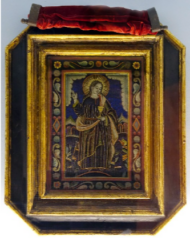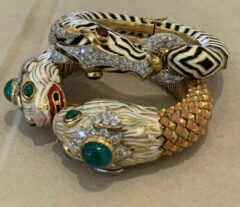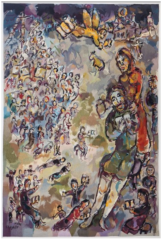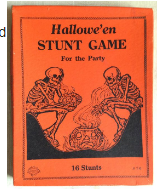
Although having an acclaimed name within American decorative arts history, Duncan Phyfe furniture is extremely rare to behold. So, in regards to an antique furniture appraisal, setting eyes upon a piece of Phyfe furniture would be like discovering the holy grail of American antique furniture!
 Scottish-born Duncan Phyfe (1768-1854) was the most sought-after furniture maker in the United States during the early 19th century. His clients included wealthy New Yorkers as well as affluent American families from across the country. Originally beginning his career as a cabinetmaker in New York, Phyfe transitioned to furniture-making, whittling a plethora of wooden masterpieces – from dining sets to an assortment of tables (card tables, pier tables, flip-top tables, work tables, side tables), as well as footstools, sofas in the récamier style (or the “Grecian couch:”), cabinets, chairs and writing desks.
Scottish-born Duncan Phyfe (1768-1854) was the most sought-after furniture maker in the United States during the early 19th century. His clients included wealthy New Yorkers as well as affluent American families from across the country. Originally beginning his career as a cabinetmaker in New York, Phyfe transitioned to furniture-making, whittling a plethora of wooden masterpieces – from dining sets to an assortment of tables (card tables, pier tables, flip-top tables, work tables, side tables), as well as footstools, sofas in the récamier style (or the “Grecian couch:”), cabinets, chairs and writing desks.
Phyfe set himself apart by infusing European art styles into his pieces, therefore forging a new, distinctly American, style. The British furniture maker Thomas Sheraton, whose furniture reflected a more refined, Neoclassical style, greatly influenced Phyfe. (Sheraton’s work, alongside Robert Adams’ and George Hepplewhite’s, has come to exemplify the American Federal style – an American adaptation of the English Regency tradition.) In addition to Sheraton’s style, Phyfe also worked in the French Directoire and Empire styles.
 Like his predecessors working in the Neoclassical manner, Phyfe modernized ancient Grecian furniture forms. His chairs, for example, evoke the klismos chair – an ancient Greek chair that had a curved (or “scrolled”) back and tapered out-curving legs. Phyfe also incorporated classical motifs – including lyre-, harp-, and acanthus leaves – (these are most often seen “curling” away from the tops of ancient columns) shapes –silhouetted into chair splats (the central back portion of the chair). The legs often featured carved claw or paw feet. The armrests were sometimes carved to resemble fluted columns.
Like his predecessors working in the Neoclassical manner, Phyfe modernized ancient Grecian furniture forms. His chairs, for example, evoke the klismos chair – an ancient Greek chair that had a curved (or “scrolled”) back and tapered out-curving legs. Phyfe also incorporated classical motifs – including lyre-, harp-, and acanthus leaves – (these are most often seen “curling” away from the tops of ancient columns) shapes –silhouetted into chair splats (the central back portion of the chair). The legs often featured carved claw or paw feet. The armrests were sometimes carved to resemble fluted columns.
Phyfe used luxurious hardwoods – his favorite materials included mahogany, satinwood, ash, poplar and rosewood. Decorative elements included gilt brass inlays and delicate veneer patterns.
Furniture historians describe his earliest work (from the early 1800s) as reflecting the English Regency style, after which he transitioned toward the more opulent and bold Early Grecian, or “American Empire” style during the 1810s-1820s. Around the 1830s-1840s, inspired by the French Restoration, the Late Grecian (or Grecian Plain Style) came into vogue, identified by classic strong, yet simple, designs.
In addition to its quality and beauty, Phyfe’s elusiveness is also part of his furniture’s fascination. As the premier furniture maker of his day, with a name recognized across the country, Phyfe rarely signed or labeled his pieces. He was also, however, the most-imitated furniture designer at the time. These two factors have made it very difficult to determine a tre Duncan Phyfe from one made in the Duncan Phyfe style. A piece in the Phyfe Style is imitation furniture: it was inspired by and designed to resemble Duncan Phyfe’s work, but was not made by Phyfe or his workshop. An antique Phyfe-style piece can be of beautiful, high-quality craftsmanship, but, because it’s not a true Phyfe, does not come close to Phyfe’s antique prices.
 This is where a furniture expert becomes a necessity. Due to these two factors – elusiveness and imitation – furniture appraisers are wary of identifying a piece as a Duncan Phyfe original. By the same toke, Phyfe’s elusiveness and imitation also cause his pieces to have eye-popping prices. Authentic Phyfe furniture pieces have appraisal values between $30,000 to over $150,000! Having the proper provenance, or historically documented lineage (such as an invoice, a bill of lading, a letter for commission, etc.) is a critical component for attributing the piece to Ducan Phyfe. Sometimes it is the only way to truly verify its authenticity.
This is where a furniture expert becomes a necessity. Due to these two factors – elusiveness and imitation – furniture appraisers are wary of identifying a piece as a Duncan Phyfe original. By the same toke, Phyfe’s elusiveness and imitation also cause his pieces to have eye-popping prices. Authentic Phyfe furniture pieces have appraisal values between $30,000 to over $150,000! Having the proper provenance, or historically documented lineage (such as an invoice, a bill of lading, a letter for commission, etc.) is a critical component for attributing the piece to Ducan Phyfe. Sometimes it is the only way to truly verify its authenticity.
Michelle Miller
Photos top to bottom:
Grecian couch attributed to Phyfe, 1826. Brooklyn Museum
Portrait of Duncan Phyfe
Two chairs attributed to Phyfe, MET
Green Room of the White House, featuring furniture attributed to Phyfe.






